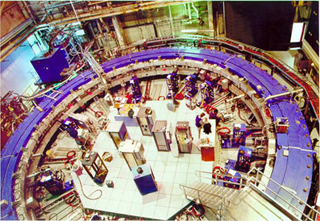Course Description
This course focuses on one important engineering application of superconductors – the generation of large-scale and intense magnetic fields. It includes a review of electromagnetic theory; detailed treatment of magnet design and operational issues, including “usable” superconductors, field and stress …
This course focuses on one important engineering application of superconductors – the generation of large-scale and intense magnetic fields. It includes a review of electromagnetic theory; detailed treatment of magnet design and operational issues, including “usable” superconductors, field and stress analyses, magnet instabilities, ac losses and mechanical disturbances, quench and protection, experimental techniques, and cryogenics. The course also examines new high-temperature superconductors for magnets, as well as design and operational issues at high temperatures.
Course Info
Learning Resource Types
notes
Lecture Notes
assignment
Problem Sets

The Muon g-2 Experiment uses the Alternating Gradient Syncrhotron (AGS) to deliver a custom muon beam into the world’s largest superconducting magnet – the “muon storage ring” – pictured above. (Image courtesy of the U.S. Departement of Energy’s Brookhaven National Laboratory.)








